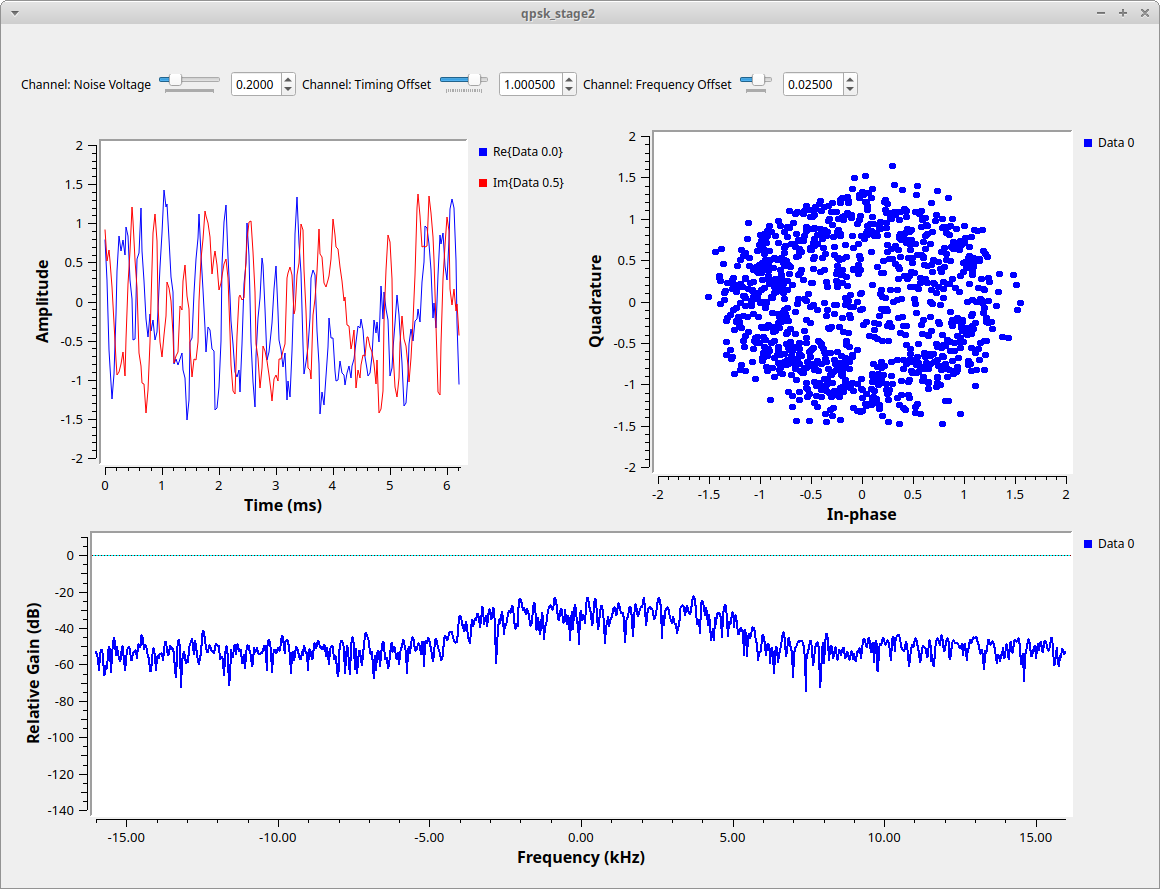Channel Impairment
Objective
In this stage, we will explore the impact of the channel on signals and compare the distortion of the signals at the receiving end and the sending end. The main focus will be on the effects of noise, frequency offset, and time offset in the channel model on the signal.
System architecture file: Qpsk_stage2.grc
Steps and Instructions
- Send a random QPSK signal.
- Set up the channel model
- Use the basic channel model in GNU Radio to simulate major channel issues.
- Thermal noise in the receiver: Assume additive white Gaussian noise (AWGN), simulated here with noise voltage.
- Frequency offset: The antenna frequencies at the sending and receiving ends are not exactly the same, resulting in a frequency offset between the two radios.
- Time offset: The clock speeds at the sending and receiving ends are different, making the ideal signal sampling point location unknown.
- Observe the characteristics of the signal in the time domain, frequency domain, and constellation diagram after passing through the channel.
System Simulation
Add noise, frequency offset, and time offset to the channel and observe the results.


The signal after passing through the channel becomes worse than in the previous stage. The receiver must find a way to overcome these problems to recover the original signal.
Additional Notes
Additive White Gaussian Noise (AWGN)
AWGN is a common type of noise in channels, with the following characteristics:
- Additive: Noise is directly added to the signal.
- White: Power spectral density is uniform across all frequency ranges.
- Gaussian: Noise magnitude is Gaussian distributed.
Frequency Offset
- There will be deviations in the antenna frequencies at the sending and receiving ends, resulting in frequency offset.
- Frequency offset shifts the spectrum of the received signal, affecting signal demodulation.
Time Offset
- The sending and receiving clocks are not perfectly synchronized, causing time offset.
- Time offset leads to a shift in the ideal sampling point.
- Time offset can also cause inter-symbol interference (ISI) problems.
Methods for Recovering Signals
- At the receiver, frequency and time synchronization are needed to reverse the channel effects.
- Use digital signal processing techniques to estimate and correct frequency offset and time offset.
- Through proper filter design and synchronization algorithms, the original signal can be effectively recovered.
Exercise 3
Simulate different noise voltages, frequency offsets, and time offsets to observe the impact on the received signal.
